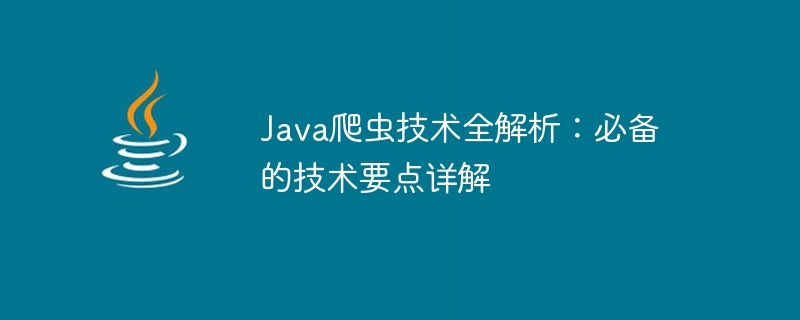

Full analysis of Java crawler technology: detailed explanation of necessary technical points, specific code examples are required
Abstract: With the rapid development of the Internet, a large amount of data is stored in on various websites. Crawler technology can help us automatically extract the required data from web pages and greatly improve work efficiency. This article will introduce the basic principles, workflow and common technical points of Java crawler technology, and explain it in detail with specific code examples.
import org.jsoup.Jsoup;
import org.jsoup.nodes.Document;
import org.jsoup.nodes.Element;
import org.jsoup.select.Elements;
import java.io.IOException;
public class SpiderExample {
public static void main(String[] args) {
String url = "http://example.com";
try {
Document doc = Jsoup.connect(url).get();
String title = doc.title();
System.out.println("网页标题:" + title);
Elements paragraphs = doc.select("p");
System.out.println("网页内容:");
for (Element p : paragraphs) {
System.out.println(p.text());
}
} catch (IOException e) {
e.printStackTrace();
}
}
}The above code is passed through Jsoup The library sends an HTTP request and parses the HTML document, obtains the title and paragraph content of the web page, and prints the output.
Conclusion:
Java crawler technology is a very powerful tool that can help us automatically obtain web page data. Master the basic principles and technical points of Java crawlers and be able to better utilize crawler technology to improve work efficiency. In actual applications, it is necessary to select appropriate crawler frameworks and libraries according to specific needs, and reasonably handle anti-crawler strategies and abnormal errors to ensure the stability and reliability of the crawler. The above article provides a detailed analysis of Java crawler technology through specific code examples. I hope it will be helpful to readers.
The above is the detailed content of Detailed explanation of the essential points of Java crawler technology. For more information, please follow other related articles on the PHP Chinese website!
 sort sorting function usage
sort sorting function usage
 How to solve the problem of forgetting the power-on password of Windows 8 computer
How to solve the problem of forgetting the power-on password of Windows 8 computer
 pascal tutorial
pascal tutorial
 How to hide drive letter
How to hide drive letter
 How to delete the last blank page in word
How to delete the last blank page in word
 Introduction to linux operating system
Introduction to linux operating system
 ps adjust edge shortcut keys
ps adjust edge shortcut keys
 What are the requirements for opening a digital currency account? Is it free?
What are the requirements for opening a digital currency account? Is it free?




